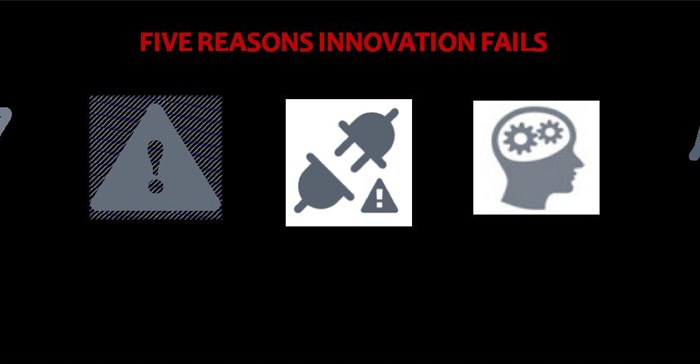
Top stories


LegalNigeria to implement new tax laws from January 1 despite calls for delay, Tinubu says
Camillus Eboh 1 day

I used to believe that innovation was not for everyone, that some businesses could grow by doing what they already do, better than the competition. Perhaps in high growth economies in uncompetitive industries this is the case, but for the rest, innovation is critical for growth and sustainability.
Digitisation has already changed the dynamics in many industries - Deloitte Digital estimate that digital interactions will influence 64 cents of every dollar spent in retail stores by the end of 2015, or $2.2 trillion. Add to this the disruption of someone coming into your industry (FNB selling digital devices); or someone disrupting your whole industry without even coming into it (Uber in the automotive industry, without owning or producing cars); and the case for innovation seems obvious.
But many businesses still struggle to allocate time and resources to the ongoing process of looking at business trends, deciding which are relevant and then committing money and people’s time to getting ideas off the ground. Without this process in place, businesses rely on the small chance that the mavericks in their business will be able to come up with a breakthrough idea. But relying on luck is not a good strategy.
Doing new things or doing things very differently introduces organisational risk. It is often viewed as safer to carry on with known initiatives that have delivered value in the past. I was amazed recently to read of Mattel’s recent introduction of different sizes and shapes of Barbie, the doll that was designed in 1959. It’s not that the innovation itself is surprising, it is surprising that it took them 57 years! In fact, they were pushed there, not by consumer and market insight, but by falling profits. I wonder if it is too little, too late?
Today in our volatile and digital world, there is unrecognised risk in not taking risks. While filling an innovation pipeline has to be done thoughtfully and systematically, management, from the top down, needs to engender a culture of risk-taking. Ideally this is reinforced with targets for growth from new initiatives, so that teams are both motivated and rewarded to innovate.
Boiling the numbers and requiring layers of approvals and amendments, to mitigate all risk, is the absolute enemy of speed and efficiency. For many new ways of doing things, there simply is no data to make you feel secure.
Some initiatives will most certainly fail and an organisation’s culture determines how this is viewed – often the personal risk involved to individuals and their careers, prevents all but the mavericks from doing new things. I like to ask workshop participants when last they remember a conversation along the lines of, “here’s what I learned from that project that failed…” If you are not hearing this in your meetings, then it is very likely that your personal risk of undertaking innovative activites is high.

Creating a matrix structure where you have a centralised innovation team that is largely responsible for non-core growth can make progress difficult. This tends to result in a mindset of “it’s not my problem” and a reluctance from line managers to allocate funds or people’s time. A similar mistake is to confuse innovation with technology: “the IT guys are handling it”.
A better approach is to set business unit targets for growth of current business and targets for growth from new. If you are a large enough business and can afford to in-source innovation experts, then they can readily assist with applying methodologies to figure out the best strategy for competing in the future.
Planning for today and planning for the future require different approaches and competencies. Planning for today focuses on the knowable market where you can use traditional research methods and business logic to compete. Planning for the future requires a creative and designer approach that is often not supported or encouraged in corporate process.
Choices need to be made about changing the mix of resources and looking beyond the standard list of competencies in yesterday’s job description. Procter & Gamble took this idea even further, swapping their people with non-competing companies to gain new perspectives and hiring in outside talent (when they had always pursued a hire from within policy).
Perhaps the hardest part of innovation is allocating resources. Beyond allocating resources to scan for and assess the trends and potential disruptors in an industry, real money has to be put behind ideas to make them a reality in the right timeframe and at the right scale. Businesses have to start learning to behave like venture capitalists. When too much time is spent discussing the idea, the icing on the cake, at the expense of figuring out how to make the batter and bake the cake, the probability of innovation succeeding is vastly reduced.